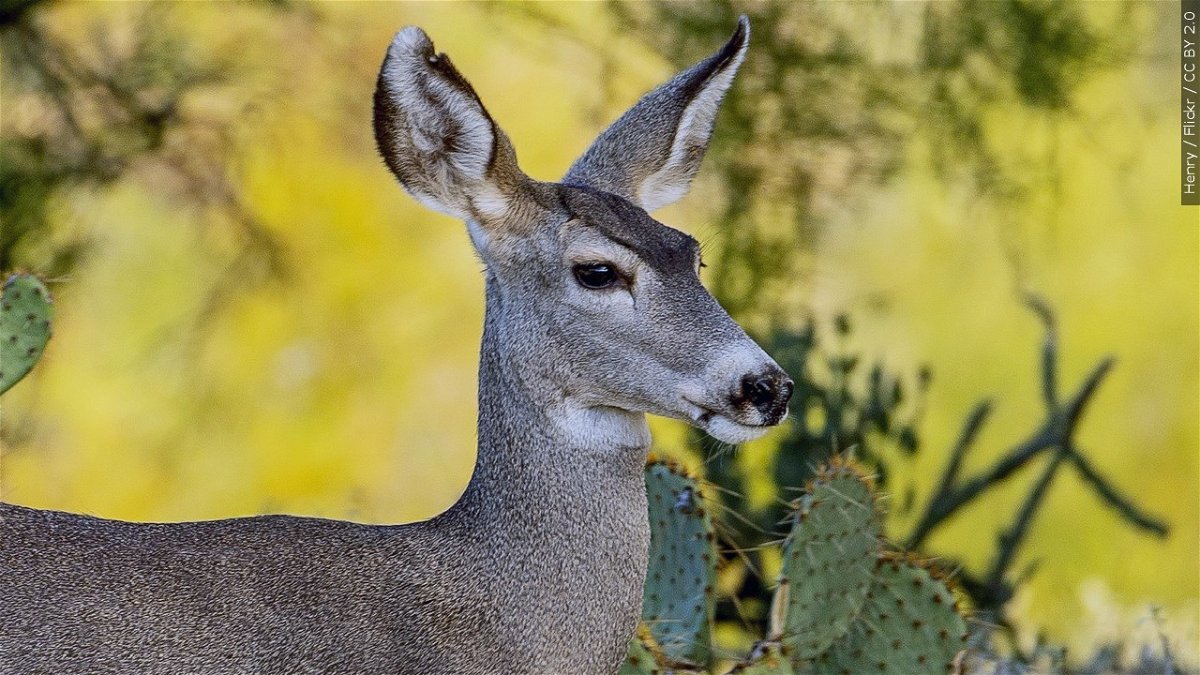Covid-19 repeatedly spread between humans and deer, study shows, raising concerns about animal reservoirs

Originally Published: 12 JUL 23 16:03 ET
By Brenda Goodman, CNN
(CNN) — People spread the virus that causes Covid-19 to wild white-tailed deer in the United States more than 100 times in late 2021 and early 2022, according to a new study from the US Department of Agriculture’s Animal and Plant Health Inspection Service. The infection circulated widely in the deer population, and in at least three instances, researchers suspect that humans caught the virus from deer.
The study also found that many coronavirus lineages such as Alpha, Delta and Omicron continued to circulate in deer after they’d left the human population.
If the virus continues to circulate in deer, as it has in humans, the study suggests that these animals could become a long-term reservoir, allowing the virus to hide out and develop new and potentially more dangerous mutations.
Scientists fear that those viruses could then jump back into the human population and spark another severe wave, as they did when Omicron arrived seemingly out of the blue. Although that scenario is concerning, it’s still largely theoretical.
Watching animal reservoirs
Experts say that a reservoir in wild animals would be a bigger deal if we’d actually managed to control the virus in humans. But the infection is still spreading among humans, and it’s most likely to mutate in us because we’re its preferred hosts.
“The more species it’s in and the more transmission that occurs, the greater the risk of new variants. However, it’s hard to say whether deer constitute much of a risk in the grand scheme at this point,” said Scott Weese, a veterinarian who studies diseases that pass between animals and people at the University of Guelph in Canada.
The US government plans to continue and expand its survey of animals to keep tabs on how the virus moves through animal populations, according to a USDA news release announcing the study results. The study was published Monday in the journal Nature Communications.
“We’d rather not have it in deer, to avoid one more potential mechanism for variant emergence and to avoid exposure to even more wildlife species,” said Weese, who was not involved in the new study.
But there’s little we could do to stop it from spreading now, he said. Scientists sometimes vaccinate wild animal populations to prevent disease spread, but it’s an expensive proposition.
Just like there’s no vaccine that completely prevents Covid-19 infections from passing between people, there’s no innoculation that prevents transmission in animals.
Why deer?
Deer and humans have strikingly similar ACE2 receptors, the gateways the virus uses to break into cells.
For the study, scientists spent months collecting nearly 9,000 respiratory swabs from wild deer in 26 states and the District of Columbia. Those swabs yielded nearly 400 viral sequences from 34 lineages of the virus that causes Covid-19. They were able to closely compare those sequences to find viruses in people that were very similar to those found in deer.
In 109 cases, researchers say, they were able to show that deer had been infected by human viruses.
Contact between deer and humans
In at least three cases, human infections cataloged in databases closely matched the genetic sequences of viruses previously carried by deer, leading researchers to suspect that those people could have caught their infections from the animals.
Deer have become common in the US, even in urban environments. Population surveys have estimated America’s deer population at 30 million animals, who may hunt for food in human trash or drink from contaminated wastewater. Humans may come into contact with deer directly while feeding or hunting them, or through droppings. House cats who spend time outdoors could also act like a kind of intermediary, Weese says, catching the virus outside and bringing it home with them.
Cats are susceptible to the virus too, as are many other species that are farmed – such as mink – or kept in zoos.
The US Centers for Disease Control and Prevention says a person’s risk of catching Covid-19 from domestic or wild animals is low. The agency advises that certain groups, such as hunters, take special precautions to further lower their risk.
The-CNN-Wire
™ & © 2023 Cable News Network, Inc., a Warner Bros. Discovery Company. All rights reserved.